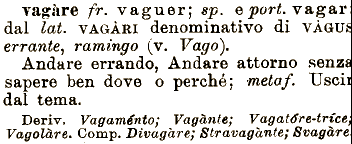The beauty briefly experienced in
Purgatorio 2 is intimately interwoven with this canticle's concern with the Aesthetic. We saw how the power of Casella's song captured the attention of the listeners. That motif continues in cantos
3 and 4, and it's worth considering why this concern with attention to sensory appearance -- with its aesthetic and epistemological implications -- surfaces here, and how it is played off against other elements in the text.
Whatever else attention to attention yields, it offers a self-reflexive mode of heightened clarity -- almost transparency. Attention in these cantos is represented as something that can be fixed upon some particular thing, then loosed; it can focus exclusively on one object, as when Dante looks intently at the boat propelled from far to near by the Angel, or when the newly arrived souls focus on Dante's breathing because it signals that, unlike them, he is a living body.
In canto 3, Dante and Virgil, scolded by Cato, have been running like frightened doves after having stood motionless, fixated upon Casella's song. As Dante ceases running, his mind's gaze begins to expand:
la mente mia, che prima era ristretta,
lo 'ntento rallargò, sì come vaga,
e diedi 'l viso mio incontr' al poggio
che 'nverso 'l ciel più alto si dislaga.
my mind, which was -- before -- too focused, grew
more curious and widened its attention;
I set my vision toward the slope that rises
most steeply, up to heaven from the sea.*
Note that in Dante's terms, the mind has gone from
ristretta to
vaga -- from a limited, specific focus to a more open, fluid, indeterminate state.
(Vaga in this passage rhymes with
dislaga -- almost certainly a word created by Dante: the mountain "dis-lakes" itself from the sea, much as the pilgrim in
Inferno 1 barely escaped from the
lago del cor.)
Vaga is rooted in the verb
vagare, wandering, vague, even "going around without knowing where or why":

What happens next keeps us attuned to the motif of attention. It all turns on the sun's rising from the sea behind the poets. This is the first natural light in the
Commedia. As the red flame appears over the horizon, Dante's body casts a shadow; Virgil's does not, and this precipitates a crisis:
Lo sol, che dietro fiammeggiava roggio,
rotto m'era dinanzi a la figura,
ch'avëa in me de' suoi raggi l'appoggio.
Behind my back the sun was flaming red;
but there, ahead of me, its light was shattered
because its rays were resting on my body.*
As C.H. Grandgent points out, the Italian is convoluted. Literally, it's: "The sun . . . was broken before me in that shape which the stoppage (or leaning) of its rays had in me."
The oddness underscores the specular relationship between Dante's body and the figure
(figura) it produces (sort of like Lacan's mirror stage). An image of his body unexpectedly appears before him -- it is seen at this point because the sun is just now introducing the mode of visibility. We might want to ask why the first thing the sun reveals to the pilgrim is a mediated image from which he can infer that he himself is in the way -- an obstacle to pure transparency.
The shadow of Dante's body next to the suddenly realized absence of any shadow of Virgil leads to the fear that Virgil has abandoned him. But here, the appearance of Virgil's disappearance is, in fact, mere appearance.
We think of the aesthetic as that which is simply apparent via the senses. Here with the sun's rise, there is light, and with light the eye begins to function. But the functioning is closer to that of the prisoners in Plato's cave than to simple sensory perception.
What Dante sees -- thanks to the big Eye coming up behind him -- is his shadow, the image or representation of a presence. In the same moment, he realizes he does not see Virgil's
figura (i.e., he "sees" the absence of any representation of Virgil's presence) and in a panic, he leaps to a false conclusion. Optics, which we thought was our reliable guide to the world, has opened a minefield of representation (a
theatre), and proves to mislead the very first chance it gets.
Before the sun rose, Dante had no possible way of making this error: the question of whether Virgil was by his side (or "there for him") never came up. At the very first opportunity, the aesthetic modality of the visible enables Dante to err in believing that Virgil is no longer there.
In a coherent and nuanced way, the handling of seeing and believing here goes considerably beyond popular USian nostrums such as, "what you see is what you get," or the Missourian "seeing is believing." The light of dawn is the moment that the poem complicates the relation of perception and apperception -- what one believes one knows and what one sees, presence and representation, image and substance.
The apparition of the visible (i.e., of apparition) so arrests Dante the pilgrim's attention that he is misled into confusing appearance with knowledge grounded in something beyond appearance. In doing so, he fails to "see the bigger picture." Whatever else is going on here, this canto is thinking through some of the complications of visible appearance, basic to the category of the aesthetic, with critical rigor.
We'll see where this leads in the second half of
Purgatorio 3, with the appearance of Manfred.
*Translation by Allen Mandelbaum






